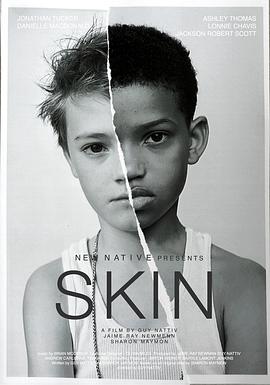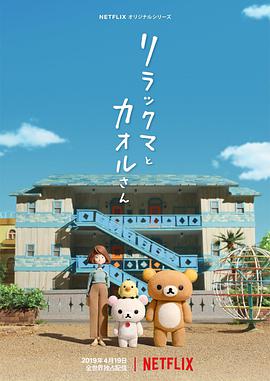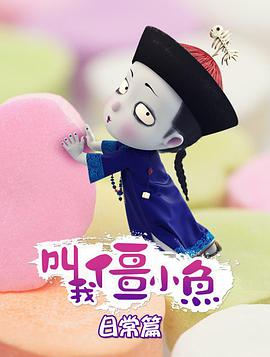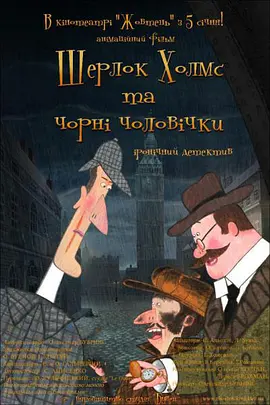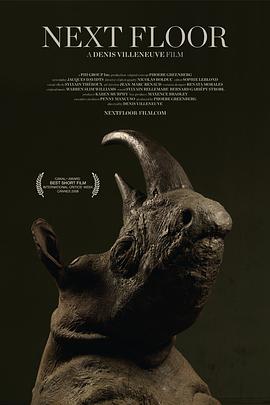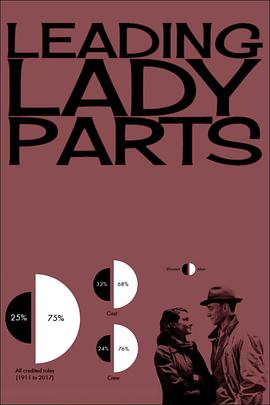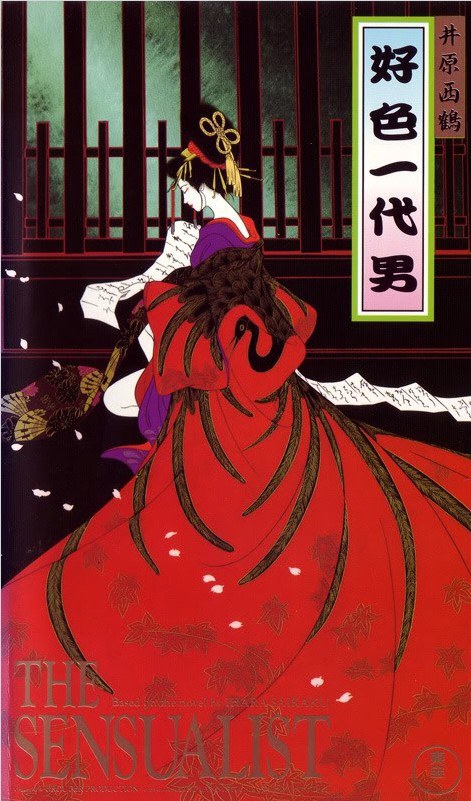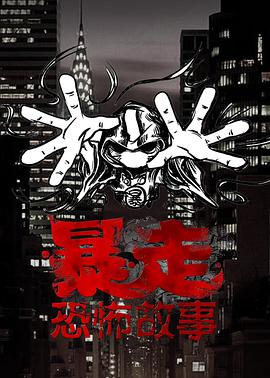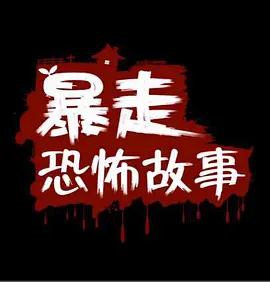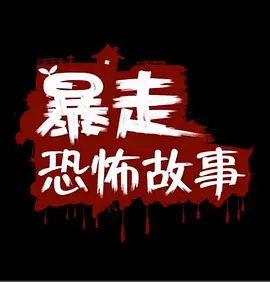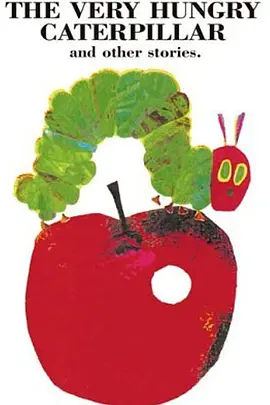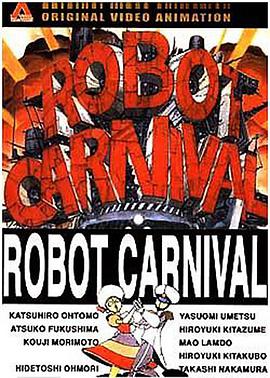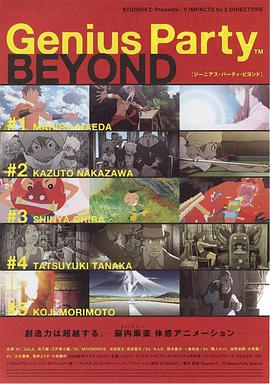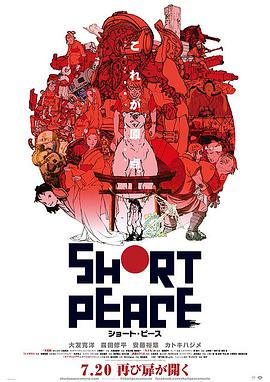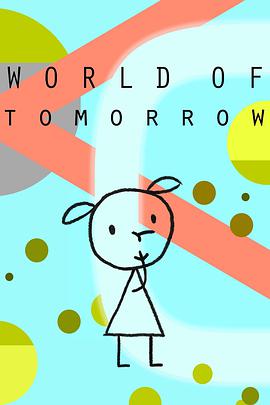短片
莱利的初次约会 (2015) 豆瓣 IMDb TMDB 维基数据
Riley's First Date?
7.9 (110 个评分)
导演:
乔什·库雷
演员:
凯特林·迪亚斯
/
本·考克斯
…
其它标题:
Riley's First Date?
/
头脑特工队番外短片:莱利的初次约会
…
在某个寻常假日,莱莉家的门铃被按响了。爸爸(Kyle MacLachlan 配音)打开门,发现门口站着的是当初莱莉(Kaitlyn Dias 配音)偶然邂逅的小男孩乔丹(Ben Cox 配音)。不速之客的到来令爸爸脑中的怒怒拉响警报,所有人员慌作一团。面对12岁的女儿可能正在交往的小男友,爸爸和妈妈(Diane Lane 配音)紧急磋商对策。妈妈脑中的小人们经过讨论,决定用时下孩子中间的流行词汇和女儿交流,这却让莱莉倍感不适,她脑中的小人们更濒于崩溃。另一方面,在客厅里爸爸和乔丹尴尬对坐。他自以为凭借压迫性的目光可以让男孩退缩,谁知乔丹的脑中俨然正进行着只有年轻人才有的混乱大派对。
莱莉的首次约会,意外的话题将故事引向意想不到的结局……
莱莉的首次约会,意外的话题将故事引向意想不到的结局……
福尔摩斯与小黑人 (2012) 豆瓣
Шерлок Холмс и чёрные человечки
导演:
Александр Бубнов
演员:
Алексей Колган
/
Лариса Брохман
其它标题:
Шерлок Холмс и чёрные человечки
/
Sherlock Holmes and Little Black Men
…
This story tells about a well-known detective Sherlock Holmes and his devoted friend Doctor Watson. They investigate extremely intricate and complicated case about the explosion in the Admiralty and disappearance of the top-secret papers from the safe. You'll meet inspector Lestrade, missis Hudson, head of the secret department Admiral Benbow and mysterious little chimney sweeps.
下一层 (2008) TMDB 豆瓣 IMDb 维基数据
Next Floor
7.8 (185 个评分)
导演:
丹尼斯·维伦纽瓦
演员:
Simone Chevalot
/
Luc-Martial Dagenais
…
其它标题:
Next Floor
/
下一層
在一间光线不甚明朗的房间内,长长的餐桌上摆放着极度奢华的美味盛宴,衣着考究的客人低头埋首,大快朵颐,风卷残云一般销蚀着桌上的美食。这些客人有的身穿军装,有的如同贵族,有的似乎是宗教领袖,无一例外的是每个人身上都满是灰尘,好像刚刚经历着一场莫大的灾难。食物一盘盘端了上来,盘子上满是动物血淋淋的尸体和内脏。客人们宛如饕餮无度的饿鬼,旁若无人地不断进食。就在此时,地板突然断裂,客人连同餐桌跌落到下一层。服务人员们淡定自若地迁到下一层,简单打扫后宴会继续。
没有节制和慈悲的食客,仿佛一层层跌落万劫不复的地狱……
没有节制和慈悲的食客,仿佛一层层跌落万劫不复的地狱……
包宝宝 (2018) 维基数据 IMDb 豆瓣 TMDB
Bao
6.5 (579 个评分)
导演:
石之予
演员:
丹尼尔·凯林
/
辛迪·劳
其它标题:
Bao
/
包
…
画面开始,一双丰满的手灵巧地揉面、按记儿、擀皮儿、包包子。没过一会儿,一笼白白净净又馋人的包子就做得了。相貌平平的女主人推开厨房的窗户,短暂的歇息。稍后,包子蒸熟,女主人端着它来到餐桌前。此时,她的老公已经起床,正目不转睛地盯着电视的新闻。而他看了表后狼吞虎咽,便匆匆上班去了。失落的女主人拿起最后一个包子,可刚一张嘴包子便大哭了起来。不知为何包子有了生命,而倍感孤独的女主人格外开心,于是将包宝宝当做自己的孩子抚养。小包子一天天长大,他起初和女主人分外亲近,但是他渐渐有了自己的个性,渴望独立,渴望远行……
本片是《超人总动员2》的贴片短片,荣获奥斯卡电影金像奖最佳动画短片奖。
本片是《超人总动员2》的贴片短片,荣获奥斯卡电影金像奖最佳动画短片奖。
好色一代男 (1991) 豆瓣
8.0 (69 个评分)
其它标题:
The Sensualist
/
Koushoku Ichidai Otoko
…
In the 54 years from his sexual awakening at the age of 7 until the age of 61, Yonosuke had relations with 3740 women and 725 men.
So we learn about the protagonist of Ihara Saikaku's 17th century novel The Sensualist in this animated adaptation, which is directed by erstwhile art director Yukio Abe, best known as the art director of the great Sanrio films of the 70s and early 80s, and scripted by erstwhile director Eiichi Yamamoto, best known for directing the experimental adult epic Belladonna.
Armed with those stats, Yonosuke makes Casanova look like the 30-year-old virgin. The 18th century Venetian and patron saint of latter-day Venutian artists such as Neil Strauss proclaims in his autobiography to have had relations with a mere 200 or so women during his lifetime. Yawn. But Casanova's autobiography is an engrossing and ethnographically invaluable piece of writing, and Yonosuke is a fictional character, so we'll call it even.
Better known as The Life of an Amorous Man, the novel was the first in a series of tracts that Ihara Saikaku published in the 1680s recounting the amorous escapades of the denizens of his Edo-period merchant class demimonde, who were apparently quite the libertines. I'm sure there are some juicy parallels waiting to be drawn between 17th century Japan and 18th century Venice by an enterprising student of comparative cultural studies.
Edo-period Japan was one of the most enlightened and liberal societies the world has ever known when it comes to sexual matters, with its sophisticated amalgamation of sexual openness and artistic expression. Rather than clients visiting prostitutes in dingy dives for a slam-bam-thank-you-mam exchange of fluids, Japan's geisha were government-sanctioned master artists who engaged clients in a classy, ritualized form of intellectual foreplay involving conversation, music and poetry.
The crème de la crème of geisha was the tayuu, and it's one of these creatures that is the object of the chase in this film. The Sensualist tells the story of a fumbling young man who seeks Yonosuke's assistance in getting with a renowned Edo tayuu. Flashbacks weave in and out of the narrative thread, filling us in on Yonosuke's respectable history of romantic dalliances.
The visuals of the film are exquisite, creating a sumptuous homage to the art of the Edo period. The characters are modeled after the style of Edo hanga, and are animated with great care under the supervision of the late great FX animator Mikiharu Akabori. Quite simply, the film is a feast for the eyes. Abe Yukio was first and foremost an art director, and the focus on the film is understandably on creating a sequence of beautiful images, which it does marvelously. There are few anime films as beautiful as this one out there. The film feels like a moving hanga.
Rather than gliding through a crude naturalistic approximation of Edo Japan, the characters inhabit the actual art and expressive symbols of the era. The ocean undulates like an ink painting, white lines on a black background. Naked bodies entwined in an embrace float through fields of lotuses. Shadows of long-eared rabbits hop across folding screens painted with stormy waves. Prints of Edo beauties or landscapes by the great masters pan across the screen, creating a heady and intoxicating atmosphere in which art, sex and life intermingle, rather than simply telling a story.
Although this is definitely a film for adults, and there is a good deal of nudity, a bit of rubbing, and a whole lot of bobbing, none of it is explicit. Actual shunga from the same period as this novel are far more explicit. Instead, symbols like the turtle and the camellia that were used back then to hint at sexual matters are used in a similar spirit during lovemaking scenes. The only time the film borders on funny is when they use the same strategy as 1001 Nights and Cleopatra and suddenly coyly shift from a shot of the couple embracing to a shot of abstract animation showing a suggestively shaped flame, or a clap of lightning that sends birds flying off of a tree. But for the most part, these shots of abstract animation are subtle and creative, and they feel like a modern extension of the traditional Japanese symbolic tradition.
Originally released in Japan around 1990, this 54-minute film was presumably a direct-to-video release. Gone were the days when a film like Belladonna, this film's only real analogue in anime, could be released in the theaters. It appears to have disappeared into obscurity fairly quickly, and it's hard to find almost any information about it anymore. Needless to say, it has not been re-released on DVD.
This film deserves a better fate. If ever a film qualified as a buried gem, this is it. There is quality work here. This was an ambitious project that was clearly a labor of love. Director Yukio Abe masterfully handles a complex narrative that flows between the present, the past and the abstract, making every image count. Mikiharu Akabori's character animation is subtle but nuanced, authentically reproducing the complex dress of the era and the styles of physical representation of Edo-era prints. And Eiichi Yamamoto deserves a lot of credit for penning an excellent script tangled with poetry, authentic inflection and subtle wit. Together, they did a good job of visualizing some pretty difficult material in a way that remained true to its explicit nature without teetering too much into the realm of bad taste.
More importantly, they fully utilized all the means available in animation to create a thematically and visually consistent interpretation of the spirit of the novel. They channel the actual art of that period into the modern means of animation, achieving a sense of artistic unity that could not be achieved in a live-action adaptation.
Despite being an erotic film, it's not meant to be titillating. The film has a sense of spiritual and literary depth that goes beyond mere sexual exploitation. It reminds me of the themes invoked in 1001 Nights, the first Animerama film, which was also directed by Eiichi Yamamoto: Ambition, lust, curiosity. The desire to push yourself to be the best YOU you can be, to go higher and higher, just to see if you can do it. That is one running themes that seems to occupy Eiichi Yamamoto in the three characters of Yonosuke, Belladonna and Aldin. 1001 Nights was intended as a film for adults addressing complex adult themes, not as erotica, and I find that that's the case with this one, although the erotic element is unmistakably more dominant here. The film feels like an homage not only to the art of Edo Japan but to the erotic sensibility of that era.
And lest all this make the film sound like a stuffy art film, it's clear that they don't take themselves too seriously. It's entertaining to watch the protagonist, a bumbling stand-in for every ordinary loser out there who isn't a Don Juan like Yonosuke, fumble his way into the arms of this goddess.
Alongside Belladonna, The Sensualist is one of the rare attempts to do tasteful and artistic adult fare in animation. The studio that produced this ambitious film might come as a surprise: It was Grouper Production, a short-lived studio that was co-founded in 1986 by Masami Hata, the director of many of the very same Sanrio productions on which Yukio Abe acted as the art director. Hata directed several of Grouper's productions, including the Hobberdy Dick TV series, the Super Mario Brothers: Princess Peach movie, and the Ping Pong Club TV series. As far as I know, this is the only film that Yukio Abe directed. Since then, he has returned to art directing, most recently working again under Masami Hata on the Stitch TV series produced by Madhouse.
How did this project come about? It seems so out of character with everything else done by the studio as well as the director. Was it a project he had always wanted the chance to direct? So many questions. Grouper continued operating for several years after this film was released, so at the very least, it didn't put them out of business, which is a relief. Belladonna was produced 20 years earlier. Films like this only seem to come around in 20 year increments. Hopefully that means we'll be getting a new one soon. It's understandable that most studios don't have the daring to try their hand at something a little more ambitious like this, but it's still a shame. The talent is out there to make a new adult epic. It only makes me all the more grateful for the occasional aw-the-hell-with-it moments of indulgence like The Sensualist
So we learn about the protagonist of Ihara Saikaku's 17th century novel The Sensualist in this animated adaptation, which is directed by erstwhile art director Yukio Abe, best known as the art director of the great Sanrio films of the 70s and early 80s, and scripted by erstwhile director Eiichi Yamamoto, best known for directing the experimental adult epic Belladonna.
Armed with those stats, Yonosuke makes Casanova look like the 30-year-old virgin. The 18th century Venetian and patron saint of latter-day Venutian artists such as Neil Strauss proclaims in his autobiography to have had relations with a mere 200 or so women during his lifetime. Yawn. But Casanova's autobiography is an engrossing and ethnographically invaluable piece of writing, and Yonosuke is a fictional character, so we'll call it even.
Better known as The Life of an Amorous Man, the novel was the first in a series of tracts that Ihara Saikaku published in the 1680s recounting the amorous escapades of the denizens of his Edo-period merchant class demimonde, who were apparently quite the libertines. I'm sure there are some juicy parallels waiting to be drawn between 17th century Japan and 18th century Venice by an enterprising student of comparative cultural studies.
Edo-period Japan was one of the most enlightened and liberal societies the world has ever known when it comes to sexual matters, with its sophisticated amalgamation of sexual openness and artistic expression. Rather than clients visiting prostitutes in dingy dives for a slam-bam-thank-you-mam exchange of fluids, Japan's geisha were government-sanctioned master artists who engaged clients in a classy, ritualized form of intellectual foreplay involving conversation, music and poetry.
The crème de la crème of geisha was the tayuu, and it's one of these creatures that is the object of the chase in this film. The Sensualist tells the story of a fumbling young man who seeks Yonosuke's assistance in getting with a renowned Edo tayuu. Flashbacks weave in and out of the narrative thread, filling us in on Yonosuke's respectable history of romantic dalliances.
The visuals of the film are exquisite, creating a sumptuous homage to the art of the Edo period. The characters are modeled after the style of Edo hanga, and are animated with great care under the supervision of the late great FX animator Mikiharu Akabori. Quite simply, the film is a feast for the eyes. Abe Yukio was first and foremost an art director, and the focus on the film is understandably on creating a sequence of beautiful images, which it does marvelously. There are few anime films as beautiful as this one out there. The film feels like a moving hanga.
Rather than gliding through a crude naturalistic approximation of Edo Japan, the characters inhabit the actual art and expressive symbols of the era. The ocean undulates like an ink painting, white lines on a black background. Naked bodies entwined in an embrace float through fields of lotuses. Shadows of long-eared rabbits hop across folding screens painted with stormy waves. Prints of Edo beauties or landscapes by the great masters pan across the screen, creating a heady and intoxicating atmosphere in which art, sex and life intermingle, rather than simply telling a story.
Although this is definitely a film for adults, and there is a good deal of nudity, a bit of rubbing, and a whole lot of bobbing, none of it is explicit. Actual shunga from the same period as this novel are far more explicit. Instead, symbols like the turtle and the camellia that were used back then to hint at sexual matters are used in a similar spirit during lovemaking scenes. The only time the film borders on funny is when they use the same strategy as 1001 Nights and Cleopatra and suddenly coyly shift from a shot of the couple embracing to a shot of abstract animation showing a suggestively shaped flame, or a clap of lightning that sends birds flying off of a tree. But for the most part, these shots of abstract animation are subtle and creative, and they feel like a modern extension of the traditional Japanese symbolic tradition.
Originally released in Japan around 1990, this 54-minute film was presumably a direct-to-video release. Gone were the days when a film like Belladonna, this film's only real analogue in anime, could be released in the theaters. It appears to have disappeared into obscurity fairly quickly, and it's hard to find almost any information about it anymore. Needless to say, it has not been re-released on DVD.
This film deserves a better fate. If ever a film qualified as a buried gem, this is it. There is quality work here. This was an ambitious project that was clearly a labor of love. Director Yukio Abe masterfully handles a complex narrative that flows between the present, the past and the abstract, making every image count. Mikiharu Akabori's character animation is subtle but nuanced, authentically reproducing the complex dress of the era and the styles of physical representation of Edo-era prints. And Eiichi Yamamoto deserves a lot of credit for penning an excellent script tangled with poetry, authentic inflection and subtle wit. Together, they did a good job of visualizing some pretty difficult material in a way that remained true to its explicit nature without teetering too much into the realm of bad taste.
More importantly, they fully utilized all the means available in animation to create a thematically and visually consistent interpretation of the spirit of the novel. They channel the actual art of that period into the modern means of animation, achieving a sense of artistic unity that could not be achieved in a live-action adaptation.
Despite being an erotic film, it's not meant to be titillating. The film has a sense of spiritual and literary depth that goes beyond mere sexual exploitation. It reminds me of the themes invoked in 1001 Nights, the first Animerama film, which was also directed by Eiichi Yamamoto: Ambition, lust, curiosity. The desire to push yourself to be the best YOU you can be, to go higher and higher, just to see if you can do it. That is one running themes that seems to occupy Eiichi Yamamoto in the three characters of Yonosuke, Belladonna and Aldin. 1001 Nights was intended as a film for adults addressing complex adult themes, not as erotica, and I find that that's the case with this one, although the erotic element is unmistakably more dominant here. The film feels like an homage not only to the art of Edo Japan but to the erotic sensibility of that era.
And lest all this make the film sound like a stuffy art film, it's clear that they don't take themselves too seriously. It's entertaining to watch the protagonist, a bumbling stand-in for every ordinary loser out there who isn't a Don Juan like Yonosuke, fumble his way into the arms of this goddess.
Alongside Belladonna, The Sensualist is one of the rare attempts to do tasteful and artistic adult fare in animation. The studio that produced this ambitious film might come as a surprise: It was Grouper Production, a short-lived studio that was co-founded in 1986 by Masami Hata, the director of many of the very same Sanrio productions on which Yukio Abe acted as the art director. Hata directed several of Grouper's productions, including the Hobberdy Dick TV series, the Super Mario Brothers: Princess Peach movie, and the Ping Pong Club TV series. As far as I know, this is the only film that Yukio Abe directed. Since then, he has returned to art directing, most recently working again under Masami Hata on the Stitch TV series produced by Madhouse.
How did this project come about? It seems so out of character with everything else done by the studio as well as the director. Was it a project he had always wanted the chance to direct? So many questions. Grouper continued operating for several years after this film was released, so at the very least, it didn't put them out of business, which is a relief. Belladonna was produced 20 years earlier. Films like this only seem to come around in 20 year increments. Hopefully that means we'll be getting a new one soon. It's understandable that most studios don't have the daring to try their hand at something a little more ambitious like this, but it's still a shame. The talent is out there to make a new adult epic. It only makes me all the more grateful for the occasional aw-the-hell-with-it moments of indulgence like The Sensualist
暴走恐怖故事 第三季 (2015) 豆瓣
演员:
古尼玛
什么是真正的恐怖?惊声尖叫的血肉横飞?不。七夜怪谈式的沉重气氛?未必。 暴走漫画倾力打造午夜场,《暴走恐怖故事》第三季惊悚来袭!全新暴走式恐怖让你笑出一身冷汗! 今夜...轮到谁?友情提示:小盆友请在怪蜀黍陪同下观看!by:yakubd.cc
暴走恐怖故事 第二季 (2015) 豆瓣
演员:
古尼玛
什么是真正的恐怖?
惊声尖叫的血肉横飞?不!
七夜怪谈式的沉重气氛?未必。
暴走漫画倾力打造午夜场,《暴走恐怖故事》第二季惊悚来袭!
全新暴走式恐怖让你笑出一身冷汗!
今夜……轮到谁?
惊声尖叫的血肉横飞?不!
七夜怪谈式的沉重气氛?未必。
暴走漫画倾力打造午夜场,《暴走恐怖故事》第二季惊悚来袭!
全新暴走式恐怖让你笑出一身冷汗!
今夜……轮到谁?
暴走恐怖故事 第一季 (2014) 豆瓣
由暴走漫画出品的恐怖(搞笑?)故事即将上映。7月11日起请锁紧菊花,集中精力观看。适合睡前来一发,保证睡眠么么哒。 由暴走漫画出品的恐怖(搞笑?)故事即将上映。7月11日起请锁紧菊花,集中精力观看。适合睡前来一发,保证睡眠么么哒。
The World of Eric Carle 豆瓣
导演:
Andrew Goff
机器人嘉年华 (1987) IMDb 豆瓣
ロボットカーニバル
7.9 (86 个评分)
导演:
大友克洋
/
森本晃司
…
演员:
森次晃嗣
/
Yayoi Maki
…
其它标题:
ロボットカーニバル
/
机器人的嘉年华会
…
《机器人嘉年华》荒芜穷困的沙漠村落,一幢标着“机器人嘉年华”的庞然大物突然出现,绚烂的烟火和奋进的音乐伴随着阵阵欢呼声,共同展开了对人类的杀戮;《弗兰肯德齿车》电闪雷鸣,风雨交加,阴森古堡,疯狂的科学家制造的机器人即将苏醒,但是意外突然发生;《DEPRIVE》入侵的外星机器人虏走了可爱的小女孩,她的机器人伙伴发誓闯入敌营救出女孩;《PRESENCE》他拥有富足的生活,却忍受着压抑的婚姻,于是渴望造出一个完全听命于自己的机器人少女;《星光天使》游乐场内,突然失恋的女孩被拾到项链的机器人带入虚拟世界玩耍,经历了前所未有的大冒险;《云》一个机器人少年独自行走,身边的云朵变化万千,如梦如幻;《明治文明奇谭—红毛人来袭卷》一个疯狂的西洋科学家操纵者机器人登陆明治时期的日本,日本年轻人则造了一个木桶机器人迎战;《庭鸟男与红脑袋》醉酒男子无意中闯入机器人统治的街区,他将经历惊险恐怖的一夜。
天才嘉年华2 (2008) 豆瓣 TMDB
Genius Party Beyond
8.0 (68 个评分)
导演:
前田真宏
/
中泽一登
…
演员:
高乃丽
/
古田新太
…
其它标题:
지니어스 파티 비욘드
/
ジーニアス・パーティ・ビヨンド
…
去年的这个时候,STUDIO4℃工作室的“天才嘉年华”系列的第一部《Genius Party》上映,包含了福岛敦子、河森正治、木村真二、福山庸治、二村秀树、汤浅政明、渡边信一郎这7位监督的7部短片,这7位导演用自己的或天才或鬼才烹制了一桌华丽的动画盛宴,虽然在表现形式和内容上都更接近艺术动画和实验动画,但对于喜爱“内涵性动画”的动画fans来说,本作是不可不看的精品。 今年,包括前田真宏(GALA)、中泽一登(MOONDRIVE)、大平晋也(WANWA)、田中达之(陶人基德)、森本晃司(次元炸弹)等5名新锐影像作家的第二作《Genius Party Beyond》即将于10月11日上映,如果说第一系列是河森正治、汤浅政明、渡边信一郎等名监督的舞台,这第二次的舞台则交给了新人们,我们也期待他们的精彩演绎。
短暂和平 (2013) 维基数据 IMDb 豆瓣 TMDB
SHORT PEACE
7.8 (133 个评分)
导演:
森本晃司
/
森田修平
…
演员:
春名風花
/
早见沙织
…
其它标题:
SHORT PEACE
/
鬼‧火‧熊‧武(台)
…
本片由四个短片组成。《九十九》健硕的手艺人在山中突逢暴雨,他仓促间在一座祠堂歇脚,谁知里面别有洞天。被人用烂丢弃的雨伞和绸缎将他团团围住,手艺人不为所惧,拿出随身携带的针头线脑缝补这些充满悲怨的旧物。《火要镇》商人之女若(早见沙织 配音)和邻家男孩年松吉(森田成一 配音)青梅竹马,两情相悦 。但是家境悬殊的二人终究有缘无分。即将出嫁的小若不慎引燃烛火,可在那一刻她却突然停止灭火呼救的念头。
《GAMBO》某座山村饱受巨大的赤鬼困扰,村民不得不将少女奉献出去以求苟存。村中最后一个女孩(田村睦心 配音)在森林里遇见可怕的白熊,她诉说了心中的苦衷,而白熊却像听懂了一般杀向赤鬼的老巢。《别了武器》一伙全副武装的战士来到早已成为废墟的都市,他们高度戒备,全力备战,只为围捕一辆无人驾驶的战车。
《GAMBO》某座山村饱受巨大的赤鬼困扰,村民不得不将少女奉献出去以求苟存。村中最后一个女孩(田村睦心 配音)在森林里遇见可怕的白熊,她诉说了心中的苦衷,而白熊却像听懂了一般杀向赤鬼的老巢。《别了武器》一伙全副武装的战士来到早已成为废墟的都市,他们高度戒备,全力备战,只为围捕一辆无人驾驶的战车。
今夕何夕 (2015) 豆瓣 TMDB 维基数据 IMDb
World of Tomorrow
8.7 (175 个评分)
导演:
唐·赫兹菲尔德
演员:
朱丽亚·波特
/
薇诺娜·梅
其它标题:
World of Tomorrow
/
明日世界
…
近未来某个时期,一户人家的机器响起铃声。梳着小羊角辫的女孩艾米莉拿着心爱的玩具跑了过来,她接通视频电话,屏幕中显现出一位女性的形象。对方自称是艾米莉第三代克隆体,来自227年后,从血缘上可以算作艾米莉的外孙女,但她实际上与这个小女孩是一个人。在未来人们可以通过不断克隆的方式让自己永生,或者在死后将意识以数字方式保存。没有钱的无产阶级则只能剥掉面皮贴在机器上,用于亲人对自己的缅怀。第三代艾米莉为初代讲述了关于未来的许多事情,她甚至通过时光机器将初代带到了自己的时代。
空灵玄妙的未来世界,人们在寻找什么……
空灵玄妙的未来世界,人们在寻找什么……


